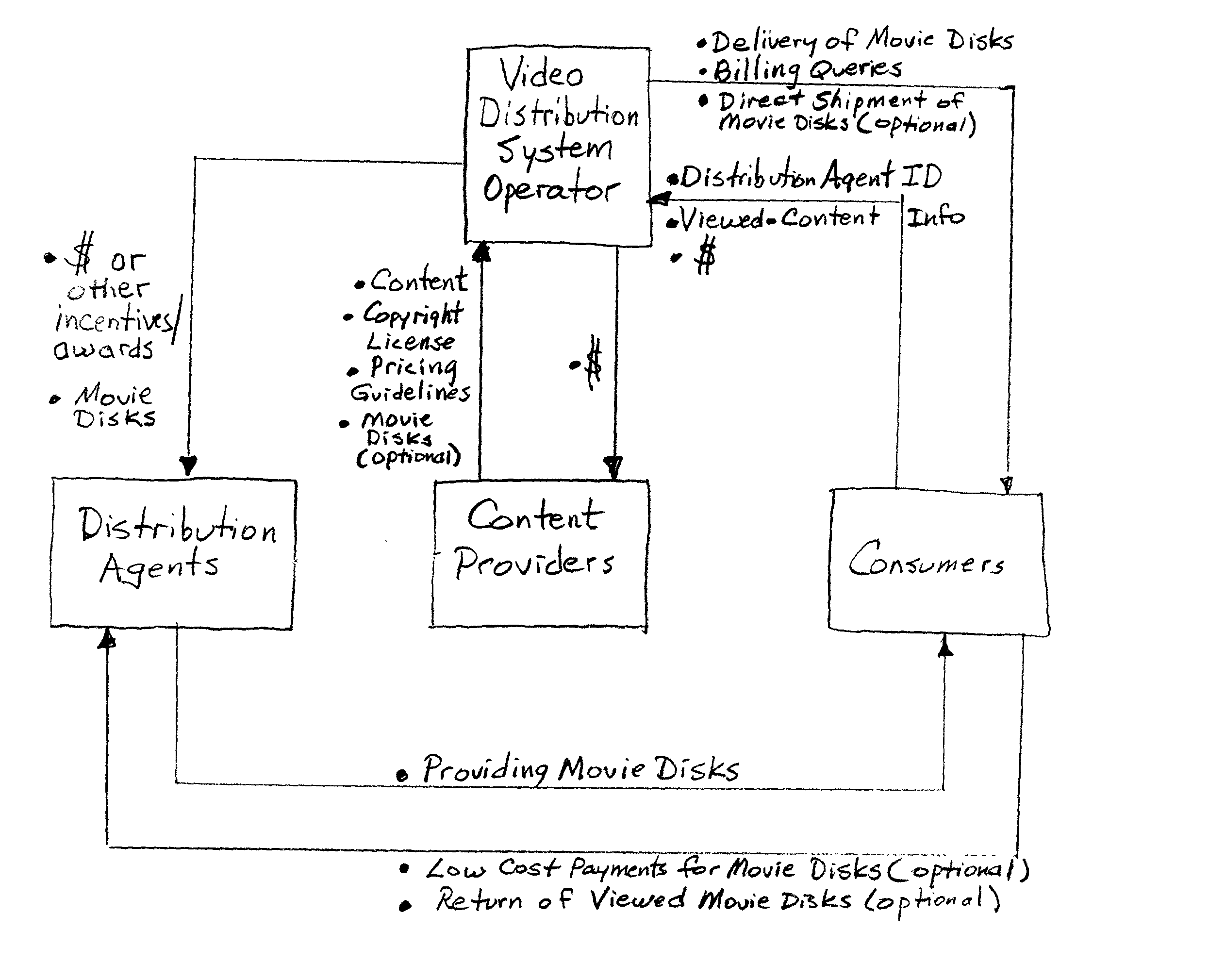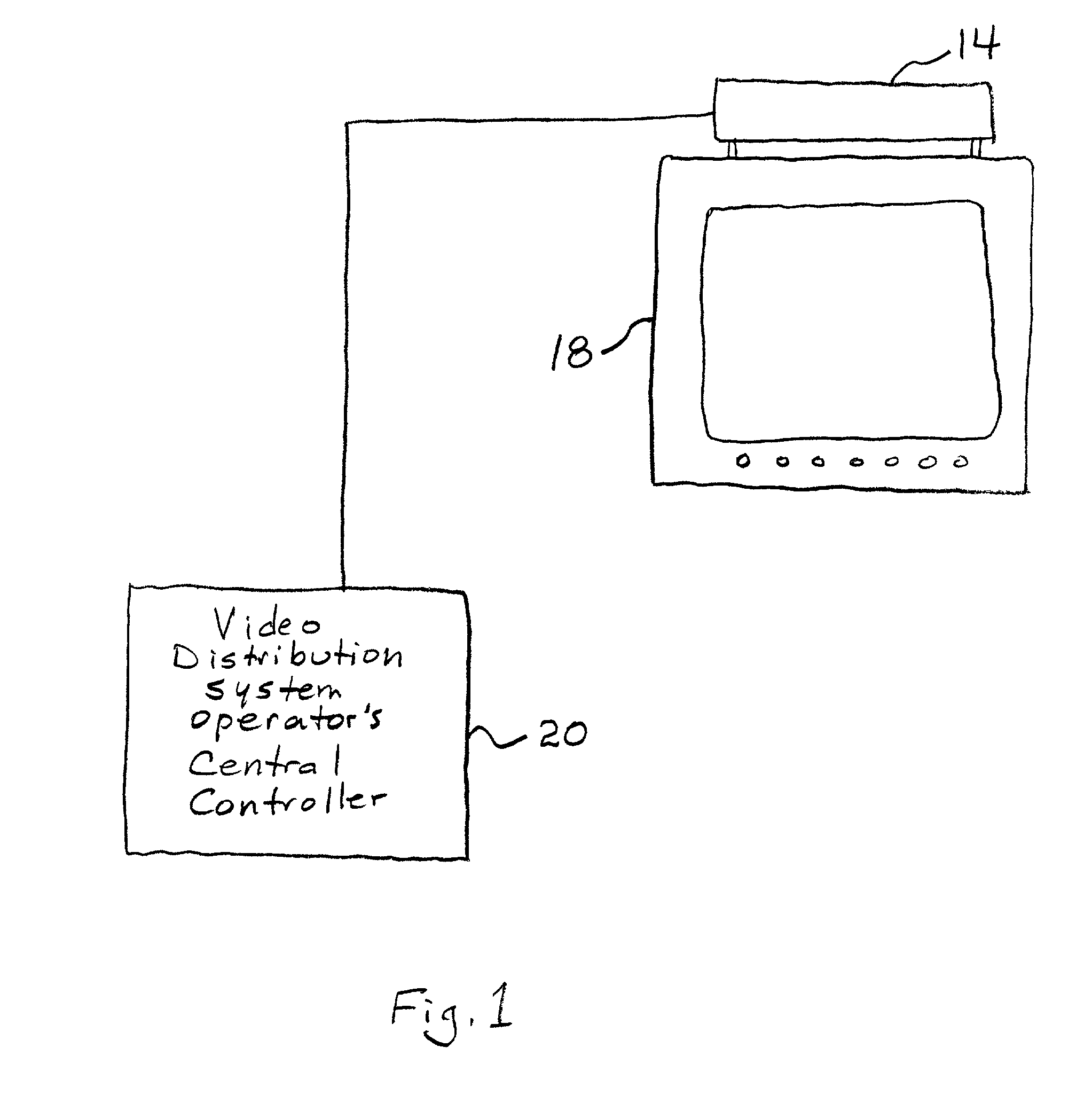Video distribution system
a technology of video distribution system and video cassette, which is applied in the field of video distribution system, can solve the problems of high capital outlay for real estate (land and building), the cost of labor at the stores, and the provision of a sort of "video on demand"
- Summary
- Abstract
- Description
- Claims
- Application Information
AI Technical Summary
Benefits of technology
Problems solved by technology
Method used
Image
Examples
example ii
[0051] A Quickie Mart convenience store rents, sells and / or gives away proprietary ML movie disks and, perhaps, player boxes that return revenues to the Mart as movies are played on them. Disks that are sold may be sold for, say, 50 cents each with $.25 credit for disks returned without scratches. The Mart maintains a stock of several hundred disks with a small computer system that predicts sales of "hot" disks and urges the owner to copy more. The copy device may be used on a "while you wait" basis by customers, looking much like a juke box and running on quarters or returned CD's. Similarly, the store owner may have a larger ten-disk ML burner in the back of the store. The burner may have been originally purchased, but is rapidly paid for by credits to the store owner as disks copied by the burner are played by customers and their boxes send the store's ID code into the system operator's central billing system. Additionally, the Quickie Mart may also rent portable players for vaca...
PUM
 Login to View More
Login to View More Abstract
Description
Claims
Application Information
 Login to View More
Login to View More - R&D
- Intellectual Property
- Life Sciences
- Materials
- Tech Scout
- Unparalleled Data Quality
- Higher Quality Content
- 60% Fewer Hallucinations
Browse by: Latest US Patents, China's latest patents, Technical Efficacy Thesaurus, Application Domain, Technology Topic, Popular Technical Reports.
© 2025 PatSnap. All rights reserved.Legal|Privacy policy|Modern Slavery Act Transparency Statement|Sitemap|About US| Contact US: help@patsnap.com



